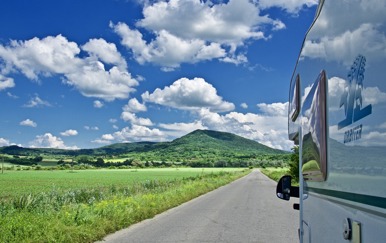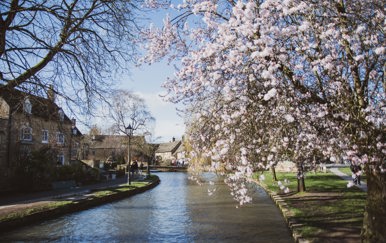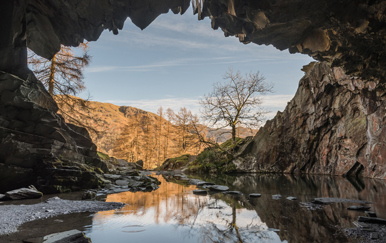It goes without saying that Europe has so much to offer, especially when it comes to travelling and scenic road trips. Combined with the fact motorhome and campervan sales consistently on the rise, now is a better time than ever to kick start your European adventures in your shiny new 4-wheeler.
In this blog, we will be running through just 10 of the best motorhome and campervan road trips across Europe for you to visit this summer (or winter), depending on which type of holiday you’re looking for!
So without further ado, let’s get started, shall we?
What documents will you need when travelling to Europe?
Touring in your campervan or motorhome is one of the most liberating and rewarding ways to see and experience the world we have around us - imagine waking up and being able to drive to wherever you choose, on your own time and schedule.
But in amongst the bliss of all this, there are a few things that you’ll need to remember before setting off, such as be sure you have:
- Documents – visas, passports, and driving licenses
- Vehicle documentation - MOT certificates, green card (proves you have motorhome insurance), and V5C registration (in case of an accident it allows the police to establish who the owner is)
- Insurance/Proof of EU cover
However, alongside this, be sure to do your own research into each country you’re visiting as rules and regulations can change quickly. It’s better to be prepared than having to turn around and come home again because you’ve forgotten something important.
What are the regulations when driving through Europe?
Whilst each country has their very own driving regulations, there are a few things that are in best practice to know beforehand that can apply to most, if not all countries you intend to visit:
Bike racks must not obscure your lights, number plate or indicators
If you are thinking about taking your bikes abroad, the good news is you can providing they do not cover any of your lights, number plates or indicators. Bike racks are also only allowed to rest of the towbar if the maximum weight has not been exceeded.
You will need a UK Identifier on the rear of your campervan or motorhome
When travelling in Europe you will need some sort of UK identifier on the rear of your vehicle, whether that may be a sticker, or perhaps a number plate that includes ‘UK’ on its own or UK with the Union Jack.
However, if you are travelling to Spain a UK identifier sticker will always be required, regardless if you have it on your numberplate already.
Laws prohibit a motor vehicle from towing another motor vehicle
Whilst there are no specific rules directly banning the use of A-frames, across Europe many countries do in fact have a law that prohibits you from being able to tow another car when driving a motorcycle or campervan.
If you do wish to take your car with you on your road trip, the best thing to do would be to use a trailer that lifts all four wheels off the ground and road.
There are restrictions on the use of SatNavs and Dashcams
Unlike the UK, in nearly all European countries it is illegal to use a car navigation system that alerts you of any mobile speed cameras or interferes with any police equipment. However, navigation systems that warn you of fixed speed cameras are legal in most places with the exception of France, Germany, and Switzerland where this function must be deactivated.
When it comes to dashcams, in many countries across Europe there are quite strict restrictions on the use of dashcams and can even result in you getting a pretty hefty fine if you are caught using one.
I think it goes without saying that when planning ahead for your road trip, it is always worth checking what is and isn’t allowed within the destinations you plan on visiting.
For more on overseas driving regulations head over to the Camping and Caravan Club website.
Top 10 European Motorhome Trips
10. The Atlantic Roadway, Norway

Kicking off our list is one of our more underrated routes. However, the Atlantic Roadway has been labelled as the world’s most beautiful drive, I think it’s more of an unmissable one.
Spread over 8.3 km, the Atlantic Roadway is a short trip that will take around 5 hours to drive so you’ll have plenty of opportunities to go rogue and explore the never-ending wonders Norway has to offer in between your planned stops.
By following the 'road in the ocean’ connected by eight bridges to really experience this unique stretch of road, you can drive right to the ocean’s edge and explore winding paths, scenic views, and miles and miles of freedom-filled road. However, don’t forget to take a small break from driving and pull over in a small town and immerse yourself fully into the local cuisine, culture, and landscapes.
Tips for travelling in Norway:
- Some roads may be closed during the winter (between September-June) so always check ahead before your plan your trip.
- Make sure to pack waterproofs and warmer clothing as even in the summer the weather can be unpredictable.
9. Costiera Amalfitana (Amalfi Coast), Italy

Luxury, good food, stunning views and architecture - get behind the wheel and enjoy what Italy’s Amalfi Coast is known for.
As you travel down the coast, you will visit 13 of the different quaint Italian towns and fishing villages packed full of historic landmarks, tucked away within the mountains and alongside that stunning, picturesque seashore.
This is another route that is considered one of the most beautiful in Europe and quite simply is amazing to drive. However with a few hairpin bends, narrow lanes, and cliff-top edges I’d say it’s suited to those with a bit more confidence, patience, and experience in the driving seat.
Tips for travelling the Amalfi Coast (Italy):
- Be aware that the Amalfi coast can get extremely busy between June and September, so perhaps consider switching the camper and adopting the Italian way of life and renting a scooter - the combination of busy traffic and narrow winding roads is something I can imagine you might want to avoid.
- The best time to go is in May or late September-October.
- If you fancy a one-day trip to the Amalfi Coast, perhaps opt to go on a boat or bus tour.
8. The Autobahn, Germany

Packed full of rich history and culture dating back hundreds of years, this is a country you won’t want to skip if you’re planning a European tour as its autobahn is a popular, famous, and safe route that has helped to put Germany on the road trip map.
Covering 936km, you’ll want to start in Cologne and finish in Berlin. Along the way be prepared to take in the art scene in Dusseldorf, the famous city of Munster, the home of Germany’s first coffee house Bremen, the historic monuments of Hamburg, the Warnow River in Rostock, and the beautiful and royal architecture of the city of Potsdam.
Once you reach Berlin you’ll be immersed in the many important and historical landmarks this capital offers, you’ll almost hear the rich tales of history being told as you visit.
It’s the perfect destination for such a trip because you can return again, again and again, and see something different each time. As a country, it encourages the visit of campervanners, so it’s ideal for beginners and those who are short on travel time.
Tips for travelling in Germany:
- If you’re travelling to Germany during the winter months, visit the famous Christmas Markets on offer!
- Traffic can build up very quickly, especially on the Autobahn so make sure to leave plenty of time when travelling to your destination.
- When driving on the Autobahn, remember are sections of the autobahn with no speed limit and it is important to remember to always double-check your mirrors before you move into the left lane.
7. La Route des Grande Alpes
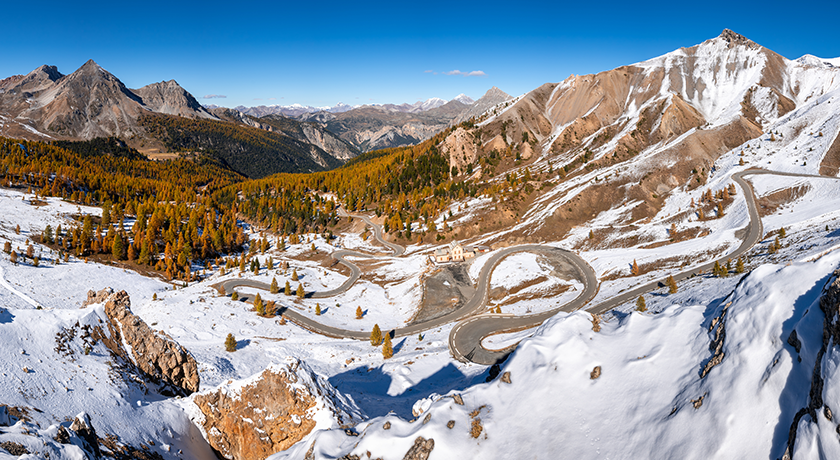
Formally known as the D902, this route is definitely one you must travel at least once in your lifetime!
Stretched over a whooping 617km, the La Route des Grande Alpes connects Lake Geneva to the Mediterranean crossing the French Alps from north to south (or south to north, whichever one you fancy) giving you a taste of two contrasting lifestyles between the mountains and the Med.
An added little bonus with this route is that it includes several mountain passes, and sections of the road have been used in the Tour de France. Although, these breathtaking views don't have to be enjoyed from just the window or your camper, why not pack your bikes and go for a ride?
Tips for travelling in France:
- Roads in France tend to be subjected to tolls, so make sure to do your research beforehand and carry some spare change at all times!
- France also has a few specific rules including in their entry requirements that only apply to them, so again make sure to stay clued up and keep note of everything you need in order to kickstart your road trip.
- Similar to Norway, roads are often closed during the winter months and are only open between June-October to ensure most of the snow has melted completely.
6. Along the Portuguese Coast, Portugal

Beach, nature, and culture are all tap, follow the Atlantic coast as you take in the sights, wonders (and pasta) of one of the most scenic routes Europe has to offer.
Spread over 800km, Portugal’s coast is home to a handful of iconic sites including the coastal city of Porto known for its production of wine, the beautiful beaches of Lagos and the local seafood served in Tavira. If you end your trip here but start in Viana do Castelo, you’ll be sure to visit all of these and more along the way.
Tips for travelling in Portugal:
- If you’re wanting to avoid crowds, why not opt for a winter road trip? Portugal is warm all year round with its average low temperatures reaching 15°C in January-March, so if you’re wanting to soak up the winter sun without the hustle and bustle this might be the most appealing option for you!
- If you want to give your motorhome a rest and venture into the busy city centres, public transport is relatively cheap and accessible meaning you won’t need to feel quite so guilty about leaving your four (or six) wheeled companion behind for the day.
5. The Hauge, Netherlands to Belgium

Now this is the only route on our list today that will have you travelling between countries, but as this is one of the luxuries owning a motorhome or campervan provides you with, I can’t see that being a problem.
When looking at the map, the Netherlands and Belgium lie next to each other and that makes travelling between the two a little bit easier. However, follow the 300km route and experience two very separate destinations that will both please you with their beauty, culture, and history.
I’d recommend starting in Amsterdam and then travelling through to Hague. Spend some time by the canal and appreciate the museums offered here. Cross the Belgium bridge and drive to Brussels where you can enjoy the gardens and parks. Finish your tour in the picturesque city of Bruges and take in all its historical charms.
Tips for travelling from the Netherlands to Germany:
- It is worth mentioning that the streets especially in the Netherlands tend to be very narrow, so it is a wise idea to find campsites on the outskirts of the city and take the bus into the centre.
- On this route, there are some pretty big cities such as Amsterdam, the Hague and Brussels so make sure to give yourself enough time to truly enjoy and explore each and every destination you drive through!
4. Ring of Kerry, Ireland
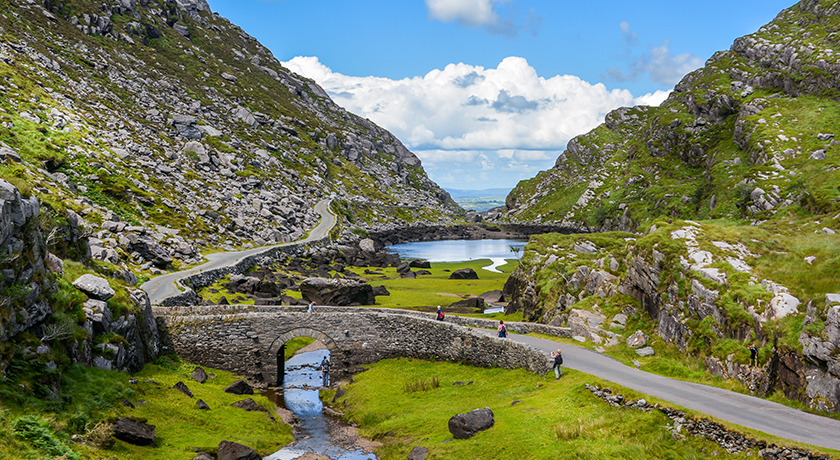
If you’re searching for a motorhome road trip a little closer to home, then visiting the Ring of Kerry might be the one for you - this is an extremely popular route around the Iveragh Peninsula packed full of beautiful and serene views and nature.
Starting and ending back in Killarney, this 179km round trip allows you to see all the big hitters including Moll’s Gap, Torc Waterfall, and the Gap of Dunloe. On your travels, you will also see miles upon miles of beautiful lakes, rivers and waterfalls, castles, and some pretty grand houses (because who doesn’t love window shopping?)
Last but not least, if you are into cycling and feeling adventurous, then why not take a day to explore one of Ireland’s most famous cycling routes to really soak up your surroundings and breathe that fresh, crisp Kerry air?
Tips for travelling around Ireland:
- Regardless of whether you plan to travel to Ireland during summer or winter, it is always best to pack something for every type of weather condition. Ireland is another country known for its unpredictable weather changes, so pack waterproofs and warm jumpers just in case.
- When travelling to Ireland, remember to take both currencies (Euros and British Pounds), both Northern Ireland and the Republic of Ireland use different currencies - it is always in best practice to take both, you never know when you’ll need it!
- If life and time permit, make sure to allow yourself at least a week to truly immerse yourself into Irelands' culture and history.
3. Road Trip across Switzerland

Starting in the world-renowned city of Zurich, this weeklong road trip is set to give you one day in each stunning location, but as you’ll be in a motorhome there is no one stopping you from spending more time in each place, there is certainly lots to do!
This route will have you venturing into some of the most breath-taking destinations Switzerland is known for, including Lucerne where you’ll be able to marvel at the blue waters of Lake Lucerne, stop in Interlaken, and set your pulse racing with activities such as skydiving and river rafting, Bern (the capital) is where you’ll see the true beauty of the country through a combination of historical architecture and natural beauty, Monteux home of the Glacier 3000, chocolate factory and numerous Jazz festivals and the skiing destination Zermatt.
Ending in Lugano, you’ll have everything you need to enjoy the final moments of your journey: a campsite at the centre, serene views of Lake Lugano, and the option of a hike through 900m Mont San Salvatore. With camping options close by each destination, you won’t need to worry about having to travel miles to see the sights, it’s all on your doorstep!
From here it’s easy to drive home or head back to Zurich on the A2 or A4 where you can do it all again!
Tips for travelling around Switzerland:
- Remember that you will need a very specific type of travel adapter for Switzerland and the typical UK-to-European travel adapter will not work!
- The best time to travel to Switzerland is dependent on what you want to get out of it. Most would agree that the best time to go for summer is between June and September, however, if you prefer winter sports, then you’re looking at heading out December-March.
- Switzerland is not part of the EU, meaning they will not accept euros, remember to exchange your British currency for the Swiss Franc.
2. The Grossglockner High Alpine Road, Austria

Starting in Oberes Nasfeld and continuing onto Franz-Josefs-Hohe, this route is packed with a variety of beautiful landscapes, waterfalls, meadows, and mountainsides that look just as amazing from the windows of your camper as they do when standing amongst them.
The mountain pass road is a total of 48km and leads into the heart of Austria’s largest national park with an area of 1,800 km that extends across the provinces of Salzburg, Tyrol and Carinthia.
Visitors from around the world have been flocking from the Grossglockner High Alpine Road to the national park to pay a visit to the main attraction - the whopping 3,798m tall Grossglockner mountain.
Tips for travelling around Austria:
- April-October is the best time to visit if you’re wanting a trip jam-packed full of hiking, mountain biking and lake swimming in the Alps!
- July and August see the highest levels of rainfall, so like many others on this list, pack for every type of weather condition!
- Again, if you own a bike or like cycling, Austria has many bike-only routes and pathways for you to enjoy that Austrian atmosphere and air a little more closely.
1. Route of the White Villages of Cádiz, Spain
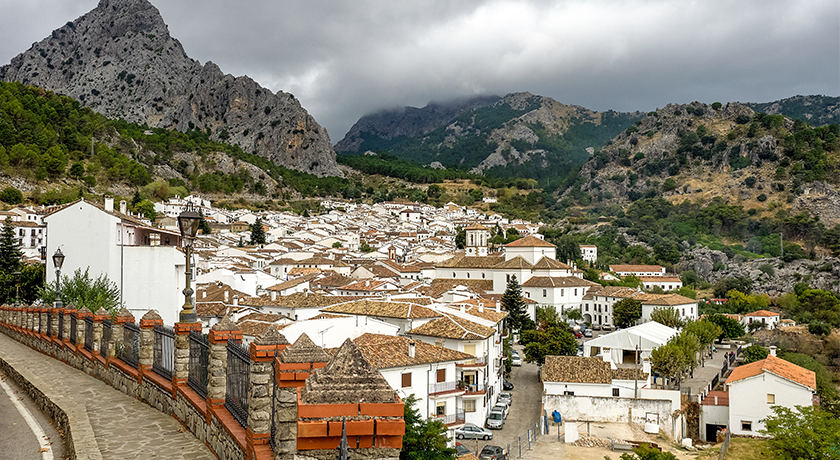
Finishing off our list today is the Route of the White Villages, situated in Cadiz.
This extremely popular route will take you roughly 3 days and travels through a landscape of 5 of the 19 white villages packed with beauty, serenity, and unique cultural heritage dating back over 250,000 years.
Taking this trip will also allow you to travel amongst both the Sierra de Cadiz Mountains as well as the Sierra de Grazalema Natural Park - two other places you need to visit at least once in your lifetime.
Tips for travelling around Spain:
- Adapt to Spanish time. While you are travelling around the route of the white villages, it is worth mentioning that many families typically do not eat dinner until 10 pm and nightlife comes alive far later, so for the time being - you can say goodbye to your usual British bedtime!
- If you’re looking for a peaceful trip, try to avoid the peak summer period between late July and August.
Ready to travel?
There we have it, pick one of our suggested routes, jump on that freedom-filled highway and explore what Europe has to offer. As I said earlier, don’t forget to check the rules and regulations of each destination you plan to visit before setting off.
And don't forget to cover your back when it comes to insurance, as some insurers offer quite limited European cover. However, Lexham offers 270 days of European coverage as standard on their motorhome and campervan insurance policies.
If you do travel one of the routes I’ve spoken about, be sure to let me know using the comments section below or on social media.



